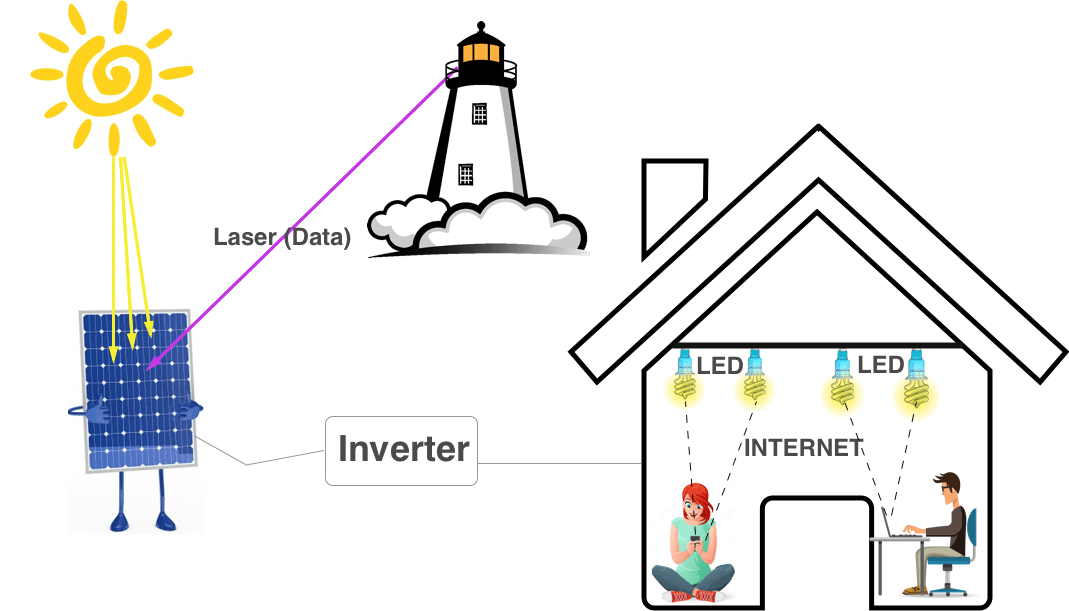Li-Fi is a wireless technology using visible light to receive and transmit data. The term was coined by the inventor of this technology Harald Haas. The operating principle is the following: a microchip embedded in LED lamp can rapidly alternate the light between on and off states which can be demodulated as a data when received on a photoelement or a PV panel.
The switched off state corresponds to 0 and the switched on state corresponds to 1 allowing digital data transmission. The modern LED lamps are capable of fast enough flickering and transmitting the modulated data via visible light communication (VLC). Luckily the flickering is imperceptible to the human eye so it will not cause a distraction. A potential downside is that the light needs to be turned on all the time internet access is needed but it can be dimmed during the daytime to the extent that the light seems turned off while it operates on low energy using VLC. The benefits include no harm to the human health as the information carrier is just a light and a higher security than Wi-Fi as the light does not pass through the walls making data interception impossible outside the room. A cool feature of this technology is that it can be coupled with solar cells. Thus PV panels carry on their primary function of electricity generation while also acting as a data receiver.
Plug-and-play devices for Li-Fi access are now commercially available with internet capacity of 11.5 MB per second which is similar to what the first generation Wi-Fi routers would provide.
In the below image the whole system is shown at work: solar panel acts as both a solar energy receiver and a broadband internet receiver. Broadband data is transmitted from a nearby laser station or lamppost. It doesn't matter where the laser hits on the panel. Finally, PV panels provide the house both with electricity and internet through LED lamps.




Comments